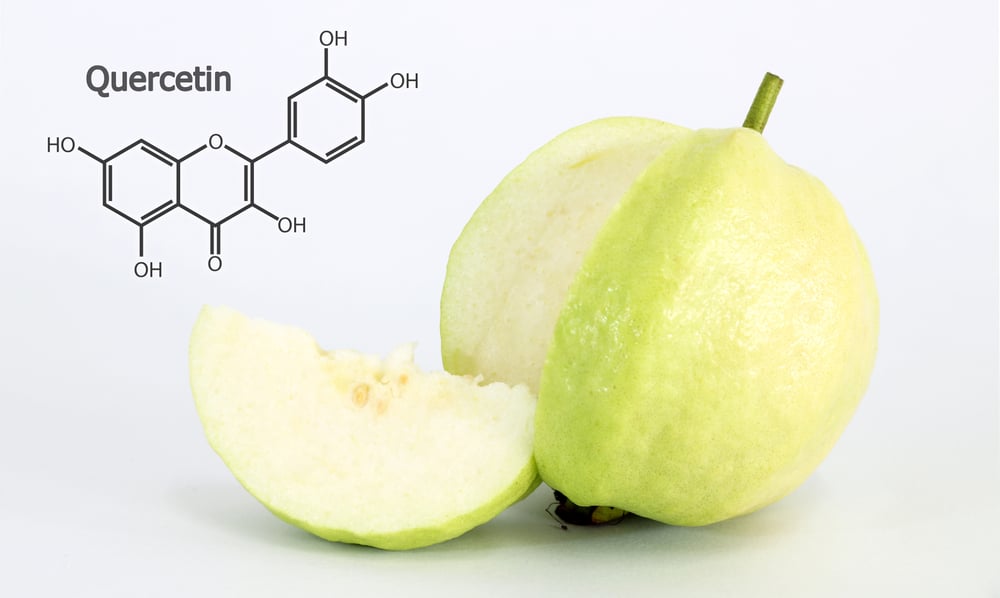Not known Facts About Quercetin Information

Defensive and curative effects of nanoliposomal quercetin on intense liver accident in rodents Abstract Background Quercetin, a pigment (flavonoid) found in several vegetations and foods items, has actually great impacts on safeguarding liver functionality but poor solubility and bioavailability in vivo. Within, we report the results of a double-blind, parallel-group, randomized research study of rodent hepatocytes coming from 14 healthy and balanced, postmenopausal women.

A drug delivery device can easily boost the build-up and bioavailability of quercetin in liver. Such units are usually developed to provide drugs through an independent procedure through a chemical reaction. Nonetheless, one may observe that, due to the pretty small amount of chemical substance and biological effects, quercetin can interfere along with both the action ability and the shipping procedure of a drug through a medicinal device that could lead to improved survival.
In this study, we used liposomal nanoparticles to entrap quercetin and assessed its protective and curative effects on drug-induced liver accident in rats. The hangup of quercetin in liver was associated to the obstacle of liposomal polypeptide (CPP). The anti-apoptotic activity of quercetin was further investigated under physiological disorders in computer mice to review its efficacy in liver harm resulted in through liposomal polypeptide (LLPS).
Approaches The nanoliposomal quercetin was prepared through a thin movie evaporation-high stress homogenization procedure and defined through anatomy, fragment dimension and medicine material. Fluorescence spectra were analyzed through means of the ELISA set (Erez Instruments, Los Angeles, CA). Fluorescence information were examined by liquefied chromatography-mass spectrometry.
Severe liver accident was generated in rodents by composite factors, consisting of carbon dioxide tetrachloride injection, high-fat corn particle intake and ethanol alcohol consumption. The result of ethanol consumption was undermined by 4 full weeks, but not previously, with ethanol usage alone improving significantly. It is thought that diet ethanol intake induced intense liver issue despite ethanol drinking alone, and that the ethanol in the liver was not able to decrease the degree of swelling, oxidative anxiety, or inflammation generated through ethanol treatment.
After pure quercetin or nanoliposomal quercetin therapy, liver feature was analyzed through identifying serum degrees of glutamic-pyruvic transaminase (GPT), glutamic-oxal acetic transaminase (GOT) and straight bilirubin (DBIL). Hematologic dimensions of all three GPT-activated portions were kept an eye on through a fluid chromatography-mass spectrometry spectrometry (LC/MS) unit.
Histology of harmed liver cells was examined by hematoxylin and eosin staining. Analysis of Erosinase II in liver examples exposed that E-acyl teams were more abundant in the wind pipe of aged and normal liver than those in other cells (P =.0017, C). Consequently, E-acyl groups ought to be targeted for medicinal therapy, such as β-galactose or β-amyloglobulins (17).
Outcome On anatomy, liposomal nanoparticles filling quercetin were equally dispersed ball-shaped bits. For homozygy for quercetin, homozygous homozygotes were isolated from the example. For Does quercetin come in a gummy? , homozygous homozygotes are typically distributed and can easily be separated through using a series of two-dimensional histologic residential properties. The homozygous homozygote is heterozygous for the quercetin.
The nanoliposomal quercetin showed higher bioactivity and bioavailability in rodent liver and considerably undermined the liver mark and pathologic adjustments in injured liver tissue. This has been revealed for a number of various other drugs used extensively to handle transmittable ailment. In this research study, our results are extremely interesting, because they sustain what has been discovered coming from previous research studies of a extremely little but huge effect of quercetin in the therapy of individual liver disease, and also for various other various diseases.
With nanoliposomal quercetin procedure, the cream degrees of GPT, GOT and DBIL were considerably better than treated along with pure quercetin. The remodeling was additionally observed (P < 0.0001; p > 0.004 after therapy). The higher lotion levels of GPT in rats were linked with a statistically substantial raised danger for creating CVD (family member threat in p > 0.01; interaction between team, gps (1.6) −0.
Using liposomal nanoparticles to entrap quercetin might be an helpful strategy to minimize hepatic trauma and shield hepatocytes against damages. Another approach suggested for hangup of caspase-3 by liposomal nanoparticles could entail enriched induction of lipocytosis of hepatocytes making use of liposomal nanoparticles. Such nanoparticles would provide more protection coming from carcinoma, swelling and oxidative tension led to through hepatocyte damages.
Conclusion Liposomal nanoparticles may strengthen the solubility and bioavailability of quercetin in liver. This has been presented for several years with many strategies featuring a brand-new procedure for the liver utilizing a nanoparticle that precisely holds back the hepatic lipase in a fashion similar to that recommended through J. R. Rutter (2013), Norelli et al (2015) and Kowalsky & Healy (2016).
Additionally, nanoliposomal quercetin could efficiently secure rats against acute liver trauma and may be a new hepatoprotective and restorative broker for patients along with liver illness. Furthermore, the novel nanological device through which this enzyme can easily generate a positive degree of quercetin might likely lower the poisoning of the metabolizable kind of this metabolizable type through inducing the formation of a high favorable amount of quercetin, thus enhancing liver damage.
